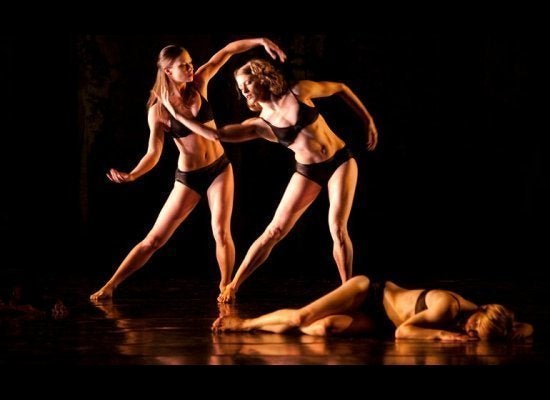
Whether it's to relatives at a family party or a random guy at the bar, when people ask what I do and I respond that I'm a dancer (or a month ago, a "dance major"), such a simple answer invariably begs more questions. No, I am not an "exotic dancer." No, I personally do not aspire to be on television.
So... like... "What do you do with a degree in dance?" This line of questioning often leaves me sputtering incoherent blather about dance which I am guessing sounds less than interesting and not all that impressive. Reader, I have a little secret: Sometimes I'm not even sure where I'm going with all of this so more often than not, I find myself changing the subject. But I'm tired of brushing it off. Dance cannot be dismissed as a free-spirited life path with no career trajectory or something that's inevitably going to leave me waiting tables for the rest of my life. Sometimes it feels like I'm constantly trying to validate what I do. I'm fully capable of offering a lengthy soliloquy on modern dance, both historically and contemporarily, and its place in society and culture. That doesn't fly with grandma or Dude-at-a-Bar. It's awfully difficult to neatly wrap it all up into a couple of sentences, put a bow on it, and have people "get it."
So, here we are. There will certainly be important points forgotten, and these are only my opinions, but I'll try my best.
Now, where do I start? What is it that I/we do? And what do you really need to know? Dance out in the world and dance in college is a rich and rigorous experience. It's pretty exhilarating to have so many hats to wear. We train, we create, we teach, we write. If we're lucky, we find our niche and run with it.
Dancers train like athletes. More and more people are coming to understand and duly respect this about ballerinas, and I'm glad to see an increase in television and movies that feature the training of ballerinas, because it is an exposé of the of hard work historically and intentionally masked by the illusion of effortless grace. But not all dancers are ballerinas. Exposure to and understanding of modern or contemporary dance is much less common throughout the media and within the cultural consciousness. Modern dance is not all about "I'm a tree! I'm the wind!" *insert wave-like arm gestures*. Though we're totally cool with that too, there is so much more to it. Technique class serves to train our bodies to become stronger, more agile and more versatile and to relate to other bodies -- just like ballerinas. Teachers have different philosophies and approaches but generally, we sweat (a lot). We get sore. We get injured. Sometimes we have to take ice baths (like football players, without the million dollar salaries).
Dancers create like artists. Like painting a portrait or writing a play, choreography and dancemaking is a craft. Space, time, energy -- the bodies are the materials and the stage is the canvas. Bodies are capricious and awkward and lovely. A great choreographer knows how to use bodies in space to say something or occasionally, nothing at all (a statement in and of itself). Sometimes it would seem audiences are afraid of modern dance because it's not evident what it's about, or what you're supposed to get walking away from it. Let me tell you another secret: that's okay. Sometimes it's boring or sometimes you might downright hate a dance. Even if you love it, the challenge is to figure out why. Maybe on the whole, as a culture, we're so used to being spoon fed meaning that we've lost interest in being challenged by our entertainment. Modern dance is a big invitation for interpretation, and sometimes it requires the audience to take an open-minded leap into the new, unknown, bizarre or abrasive.
Dance teachers are also educators. Teaching dance is becoming more than just a way to pay the bills. In my teaching classes, we study teaching theory and movement development. Our mandatory anatomy classes leave us with as much knowledge of the bones and muscles and squishy insides of the body as a certified personal trainer or masseuse, and a great dance teacher knows how to pass this information on. We analyze our own methods and assess our students and strive to help them grow and develop skills. Fundamentally, it's not all that different than teaching any other subject.
Finally, we learn to write and think like scholars. Dance history goes beyond names and dates and old, obscure black and white videos. All dance is a reflection on centuries of culture, whether in our backyards or around the world. Dance reflects the mood of a generation and value judgments on bodies. Learning about the past informs our choices as artists in the now. Dance studies is a growing and valuable field that strives to understand and analyze the choices and possibilities of a dancer, choreographer or teacher.
So, that's what I have to offer you. Above all, support dance. Chicago has an amazing modern dance scene filled with emerging artists, classic productions and evolving aesthetics. Dear audience: take chances. See something weird. Talk about it.